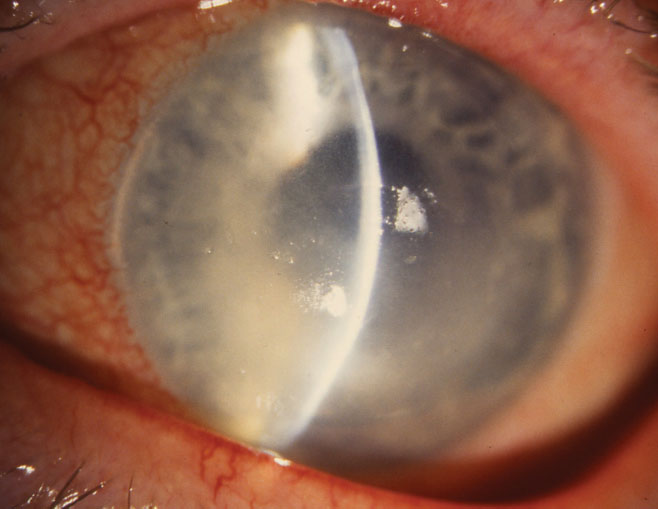 |
Q:
I have a 27-year-old patient who is interested in having LASIK but had a methicillin-resistant Staphylococcus aureus (MRSA) skin infection six months ago. She responded well to treatment and has had no new episodes. Do I have her wait for surgery or discourage her entirely from undergoing LASIK?
A:
“Today more than ever, the optometrist and ophthalmologist must carefully screen for and manage a number of conditions that place patients at elevated risk for sight-threatening postoperative infections,” says Eric Donnenfeld, MD, a Long Island ophthalmologist and previous president of ASCRS who specializes in refractive, corneal and cataract surgery. One of the most significant risk factors is the colonization of MRSA or methicillin-resistant Staph. epidermidis (MRSE), notes Dr. Donnenfeld.
Higher Stakes
Colonization is becoming more common and may be present in 50% of patients who have cataract surgery.1 Patients who have been on long-term antibiotics or have had prior infections are more prone to colonization by these resistant organisms, says Dr. Donnenfeld.
Clinicians must consider the higher possibility of post-op infection in these patients. “LASIK is a reasonable procedure as long as the patient is treated aggressively with lid hygiene, disinfectants and the appropriate prophylactic antibiotic,” Dr. Donnenfeld says.
Reviewing the Choices
“Several surgical options should be considered for patients with higher risk of infection,” says Dr. Donnenfeld. Studies show LASIK has a lower risk of post-op infection than photorefractive keratectomy procedures because patients heal faster.2
Patients with known colonization and signs of blepharitis who are considering LASIK should have a culture taken of their lid margins and undergo treatment based on drug-susceptibility testing results, Dr. Donnenfeld says.
He also recommends using hot compresses, increasing lid hygiene, sterilizing with topical disinfectants like hypochlorous acid, treating with antibiotic ointments that have good activity against MRSA and aggressively supporting the ocular surface to prevent epithelial defects. These measures should be taken during the screening visit, and a follow-up should be scheduled before surgery to ensure the blepharitis has resolved, notes Dr. Donnenfeld.
 |
| This patient developed an early MRSA infection under their LASIK flap. Photo: Eric Donnenfeld, MD |
Prophylaxis of Patients at Risk
Dr. Donnenfeld developed a protocol to reduce infection in patients with a history of MRSA or MRSE:
Pre-op. Dr. Donnenfeld recommends aggressively treating blepharitis to reduce Staph. colonization on the lid by using hot compresses and increasing lid hygiene. He also encourages the use of a hypochlorous acid and a fourth-generation fluoroquinolone QID for five days.
Post-op. Dr. Donnenfeld says a fourth-generation fluoroquinolone QID and an antibiotic drop QID effective against methicillin-resistant organisms should be used for five to seven days for additional prophylaxis against MRSA and MRSE.
If a patient with a history of MRSA develops an infiltrate after LASIK, the infection is likely resistant to the fluoroquinolone unless a culture sample proves otherwise, Dr. Donnenfeld says. He adds that the patient should be referred back to the surgeon for treatment.
Dr. Donnenfeld says high-risk patients require close post-op monitoring, “with return visits every few days until healing is evident.”
In the current microbiologic environment, clinicians should presume that every patient is colonized by MRSA or MRSE when deciding how to proceed with treatment, according to Dr. Donnenfeld.
1. Olson R, Donnenfeld ED, Bucci FA Jr., et al. Methicillin resistance of staphylococcus species among healthcare and non-healthcare workers undergoing cataract surgery. A Clin Ophthalmol. 2011;10(4):1505-14. |

